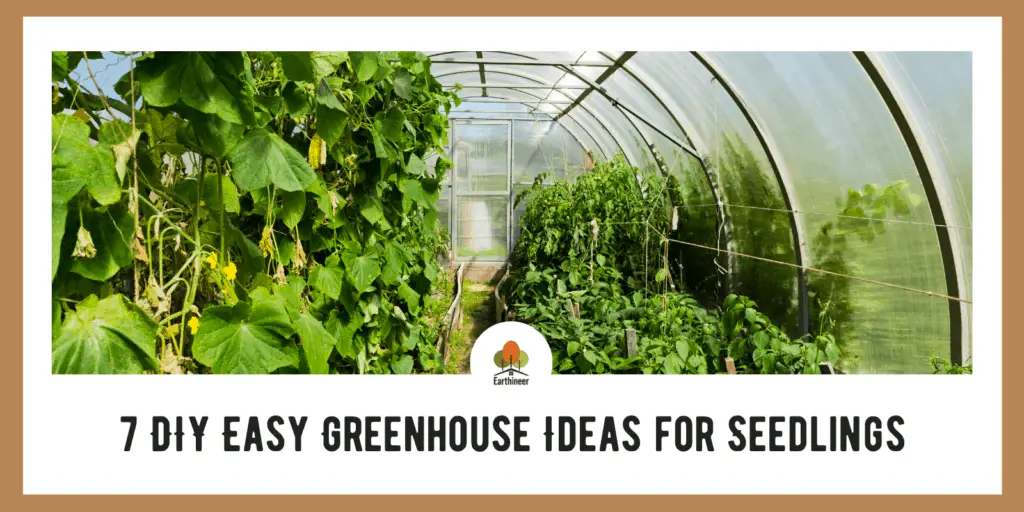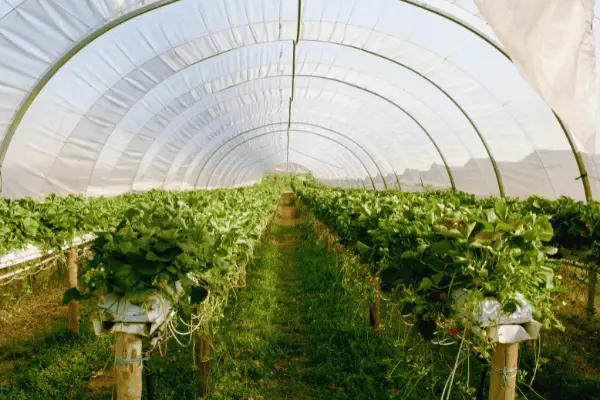There is never a lack of work on a homestead and springtime piles even more onto your plate with the beginning of the growing season. Many steps need to be taken to successfully grow a plant, especially if you are starting from seed.
One popular way to grow plants is by using a greenhouse. Greenhouses offer not only physical protection from the elements and other dangers, but they also provide a warm environment in which to grow. Both of which give plants an ideal place to flourish, particularly when starting with seeds or small plants.
7 Green House Ideas
When you think of a greenhouse, what is the first thing that comes to mind? For me, it is usually a structure about the size of a garage or larger with the sides and roof made from glass or more typically some type of sheet material.
And I think this is why many people do not utilize a greenhouse because they think they do not have space or the money to invest in such a structure.
But guess what? We don’t have to go with the traditional greenhouse structure to get the same benefits from it. In fact, I would bet that most people have materials at home to create a small greenhouse today.
Some of the following ideas are for individual plants while others can accommodate many plants. Let’s take a look at 7 DIY greenhouse ideas and see which one suits your needs.
Two Liter Bottles
One of the simplest greenhouses you can make is by using two-liter clear plastic bottles. Other than the bottle, you will need a cutting tool (a razor blade works best) and an awl. There are two different ways you can go about making this.
The first is to cut the bottle just below the neck at its widest point and all the way around the bottle. Go ahead and discard the top. Now invert the bottle and poke a few air holes into the bottom. Place the open end of the bottle over seedlings or small plants and push soil up around it to help hold it in place.
The second option is kind of the opposite as above. To start poke a few drainage holes in the bottom. Now, take the knife and cut a few inches up from the bottom all the way around the bottle. Pack fresh soil into the bottom piece, plant seeds cover it all up with the top portion of the bottle.
The last way method is the simplest and least time-consuming. Using the knife, cut the bottom away from the bottle and use the top portion to cover seeds and plants, remember to remove the cap.
Also, this is easy material to work with so you can certainly get the kids involved with the project. If they do, you may want to swap out the knife for a pair of scissors depending on their age.
Milk Jugs
The method for using these is pretty much the same as the above method except it uses plastic milk jugs. I remember when I was a kid using these quite a bit for small tomato plants.
The jugs were thoroughly washed, and the bottoms were cut out. The jug would then be placed over the tomato plant and soil pushed up around the jug to keep it in place. Once the plant started coming through the top spout, the jug could be removed.
Umbrellas
This is a rather ingenious method and for the life of me, I can’t remember where I saw it, but I thought it was pretty cool. It entailed buying a bunch of clear umbrellas on clearance and removing as much of the center pole as needed.
The umbrella is then opened, and the center pole is pushed down into the ground until the sides of the umbrella touch the ground. This will provide cover for the plants as well as give your garden a unique look for sure.
Window Well Covers
In case you do not know what I am talking about, I am referring to the curved plastic covers that you usually see installed over basement windows. Do you have a couple of these laying around that are not being used? Well even if you don’t, they are pretty cheap to pick up at your local hardware store.
Go ahead and grab yourself two of them. Use a thin bead of strong glue or staples to adhere the edges together so that the two of them form a dome shape. The dome can then be easily picked up and placed over whatever plants you want to be covered.
Grow Box
This project will allow you to break out your handyman skills a bit because it will require some building.
There are several different variations of this, but the overall idea remains the same. Build four walls, like a raised bed for example, and create a lid for the box that is made out of glass or clear plastic material. By making the lid hinged, it will give you easy access to the plants inside.
Similarly, a small, framed structure could be placed around a raised bed and covered with plastic sheeting.
Plastic Totes
Clear plastic totes are another affordable means of creating a small greenhouse. Soil can be placed directly into the tote for growing but that would make it rather heavy and difficult to transport should you need to move it.
Instead, go ahead and line the bottom of the tote with as many small planting containers that you need and those will be what the plants will grow in. These totes come in various sizes and are easily moved from indoors to outdoors. Don’t forget a good lid that snaps into place, this will help keep the plants inside warm and well protected.
Shelving Unit
If you are looking for a small greenhouse with a little more space this option might just be up your alley. A shelving unit provides multiple layers of growing area while having enough open space around it for sunlight and ease of access. Once you have the unit, all you will need to complete the greenhouse is some clear plastic sheeting to cover everything up.
These can be bought brand new, but shelving units are a dime a dozen and you can usually find good deals on them at garage sales or even at second-hand stores. For convenience, consider a shelving unit on wheels to make it super easy to move.
FAQs
Can a greenhouse get too hot?
What can I do if my green house is getting too hot?
Should a greenhouse be in direct sunlight?
Wrap Up
The seven DIY greenhouse ideas above may not be the coolest looking thing on the block, but they are certainly affordable, can easily be made at home, can be personalized to your needs, and most importantly they work.
The next time you go to plant seeds or small plants, I hope these miniature greenhouse ideas come in handy and inspire you to DIY. Thanks for reading and I hope you always have a successful growing season!



